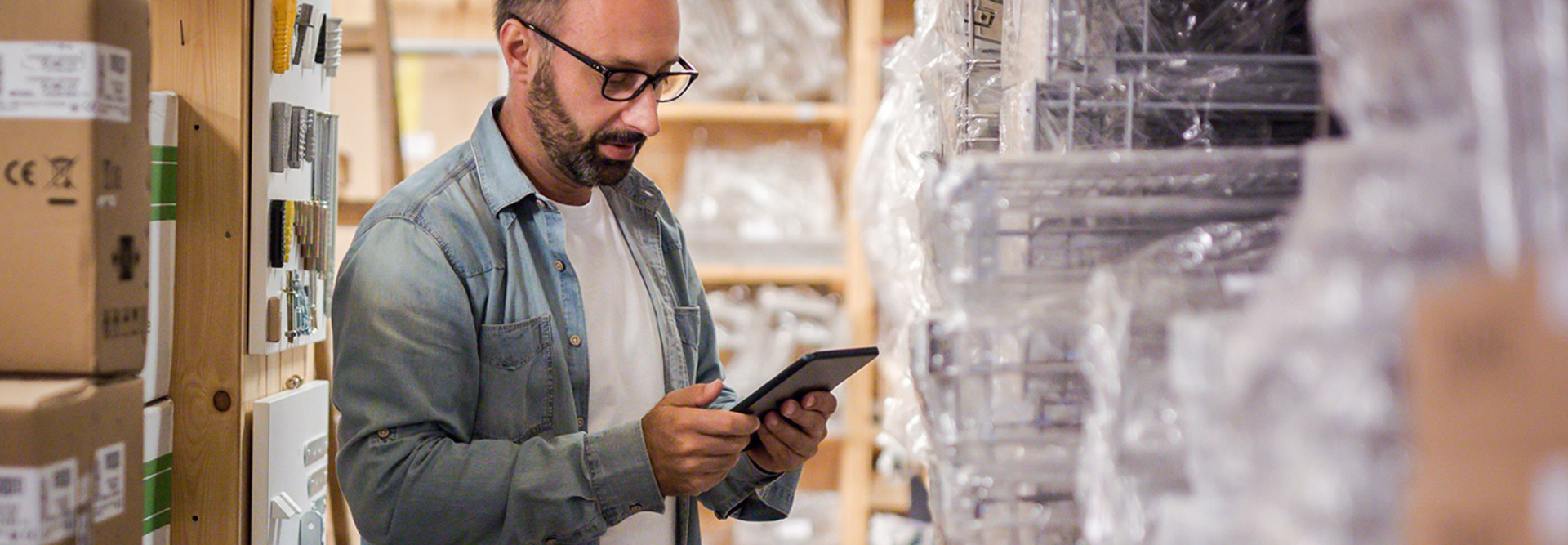Innovative Tech Helps Retailers Transform Inventory Management
A new generation of innovative management tools is giving forward-looking retailers improved control over their supply chain, warehouse and store inventories while taking customer service to new heights.
Technology is driving both disruption and opportunity, says Katie Kean, an IBM global consumer industry vice president and CTO. “It is technology that has enabled nontraditional competitors, such as nimble born-in-the-cloud entrants, to take market share from established brands by being able to quickly pivot to meet the ever-changing needs of the consumer,” she says.
But more and more, the real competition no longer involves brick-and-mortar stores versus online retailers. Instead, the competition is among retailers that can improve inventory operations to optimize multiple channels. Multichannel retailers are managing their operations to serve customers in ways that online-only merchants can’t match.
One innovative approach, Kean notes, involves optimizing the supply chain and managing inventory to predict and manage demand at a local level. “This enables a retailer to meet the needs of the consumer even before they know they want it,” she says. “This requires technology to combine multiple types of data — from both inside and outside of the organization — to uncover new, actionable insights.”
SIGN UP: Get more news from the BizTech newsletter in your inbox every two weeks!
Use Tech to Make the In-Store Experience Seamless
Integrating online and in-store inventory management allows retailers to blur the line between the competing shopping models, enabling them to offer customers the best of both worlds. In whatever ways customers prefer to shop, the most effective retailers meet their needs. Top retailers can offer in-store pickup of online sales, or store-based sales associates can have items shipped to a customer’s home if they’re out of stock in a particular store.
Radio-frequency identification (RFID) technology plays a major role in allowing retailers to provide online-level service in stores. “As consumer shopping behaviors and expectations have shifted dramatically in the digital age, customers now expect to find whatever they want, when they want it, and RFID has helped retailers come a long way to delivering on these expectations,” says Ryan Parker, head of responsive retail for Intel’s IoT group. “Retailers that have implemented RFID have seen an average of over 25 percent improvement in inventory accuracy and profit margins boosted by 60.7 percent.”
Mobile devices and apps are also tools that retailers use to compete against online merchants. Tablets, for example, give retailers the ability to improve customer loyalty and derive more meaningful insights based on what happens on the store floor, says Jeremy Witikko, Cisco Systems’ global retail business development manager. “Retailers can use wayfinding to pick online orders that are being fulfilled from the store floor faster with less labor,” he says. An app instantly compares the list of items needed to their locations in the store, giving the picker an optimized path to follow.
Meanwhile, efficient management at the point of sale (POS) helps retailers better organize and optimize their entire inventory. As items are sold, they can be ordered and replaced as needed. “Many companies have a ‘sled,’ or adapter, for mobile devices that allows them to be transformed into a mobile point of sale (mPOS) device, allowing store associates to process sales in place, improving the customer experience,” says Michael Brewer, retail and hospitality product marketing manager for Aruba Networks.
Parker agrees. “With mobile point of sale, the associate can provide real-time recommendations, SKU lookup, etc., as they assist the customer via their mobile PoS tablet, transforming a traditional PoS into a multipurpose sales device.”
Analytics, AI Help Retailers Make Smarter Inventory Choices
Effectively managing inventory in backrooms, warehouses, in transit and with suppliers helps retailers meet customer needs quickly and at a lower cost. “People are coming to the store for expertise and experience,” says Greg Buzek, founder and president of IHL Group, a research and advisory firm specializing in technologies for the retail and hospitality industries. “If you’re out of stock because your inventory is off, that’s a bad experience.”
Poor inventory management also hurts the bottom line. “In overstocks and out of stocks, in worldwide retail, we lose the equivalent of the GDP of Australia,” Buzek says. “We lose over a trillion dollars in sales and margins because of inaccurate inventory.”
Asset tracking helps store managers understand just how many products of a particular type are currently on the sales floor at any given time, and also the average number of days on the floor for each item. “When this data is processed through an inventory analytics platform, retailers can get deep insights that help them make better, more profitable merchandising decisions, such as what ‘stale’ inventory should be transferred to another region where it might sell better,” Brewer explains.
A rapidly growing number of retailers are using artificial intelligence (AI) to gain deeper insights into their retail management practices and make efficiency improvements. “AI can process an exponentially larger set of data in a much shorter period of time than any small army of data scientists,” Witikko says.
Using the power of AI, retailers can find patterns in a sea of white noise. “The ability to respond to lightning-fast changing customer expectations — sometimes on a day-by-day basis — and meet them with advanced technologies can be a clear advantage for any retailer and allows a lot of flexibility in the shopping experience.”
Strong Network Infrastructure Enables Great Experiences
Parker estimates that most retailers have an inventory accuracy of about 60 percent. With the explosion of omnichannel commerce, retailers need to know in real time exactly what products they have available and how they will be delivered: at the point of sale, in-store pickup, to the customer’s site and so on. “To enable these use cases, retailers must increase their investment in processing, networking and storage,” he says.
“Retailers need a robust, pervasive, secure network infrastructure that’s capable of supporting not just operational technologies, but also technologies that elevate the customer experience, such as location-based services, that can provide real-time, contextually relevant experiences,” Brewer says.
Brewer also recommends investing in cloud and in-store edge processing technologies, as well as cloud application and storage services. “For real-time analytics and insights, edge computing — or the ability to perform data processing at the edge of the network, near the source of the data — is a must,” he says.
Learn more about how CDW’s solutions and services can help you optimize your retail operations in the digital age.








